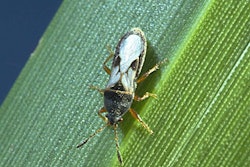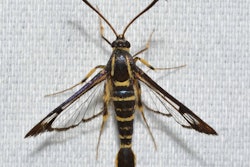You can have the best intentions, but unless you take the time and effort to properly calibrate your spreader, you run the risk of doing more harm than good when applying fertilizers and pesticides to turf. You could end up with stripes of light and dark green, inconsistent pest control or even foliar burn.
Admittedly, calibrating a spreader probably isn’t in your Top 10 list of fun things to do. It’s somewhat time-consuming, tedious and the directions can be confusing. Like it or not, if you offer chemical application, you should be calibrating your spreader for each granular product you use because they all differ in size, density (weight), active ingredient and nutrient content. You should also customize the calibration based on the operator. While the average walk-behind speed is about 3 miles per hour, operators can vary in speed, which will impact coverage. When it comes to spreading granular products, you have two walk-behind choices: a drop spreader or a rotary spreader.
Drop spreader calibration
Before beginning the calibration process, check to make sure your spreader and its various parts are working the way they should. If not, you will not get an accurate calibration and will have wasted your time.
Next, assemble the following materials: A catch pan (that can be mounted under the spreader), a scale (able to accurately weigh small amounts of material), a tape measure, a bucket, chalk, a pen, calculator and paper. Then follow these instructions, which are based on those recommended by the Penn State Cooperative Extension:
1. Measure the spreader’s swath width (the distance between its two wheels).
2. Mark off a 100-foot straight section on a paved area (use the chalk to mark it).
3. Attach the catch pan.
4. Fill the spreader with the material you wish to apply (make sure the hopper is closed).
5. Adjust the spreader to the recommended setting listed on the product label for the rate you want to apply. If there is no recommended setting, use a lower setting. (You can keep adjusting the setting in three separate trials to get a more accurate average rate of application.)
6. Position the spreader several feet in front of your marked starting line and begin walking at the pace you’ll walk during application, keeping the pace steady. When you cross the starting line, open the hopper. Close the hopper as you cross your marked finish line.
7. Empty your catch pan into the bucket and weigh it (subtracting the weight of the empty bucket). Now you know how much product you used in a 100-foot pass.
8. Here is where the math comes in:
Always calculate fertilizer calibrations using an equation for how much nitrogen you want to apply. For example, you want to apply 10-10-10 fertilizer at a rate of 1 pound N per 1,000 square feet. Here is how to figure out how much fertilizer you’ll need:
Pound of N per 1,000 square feet










